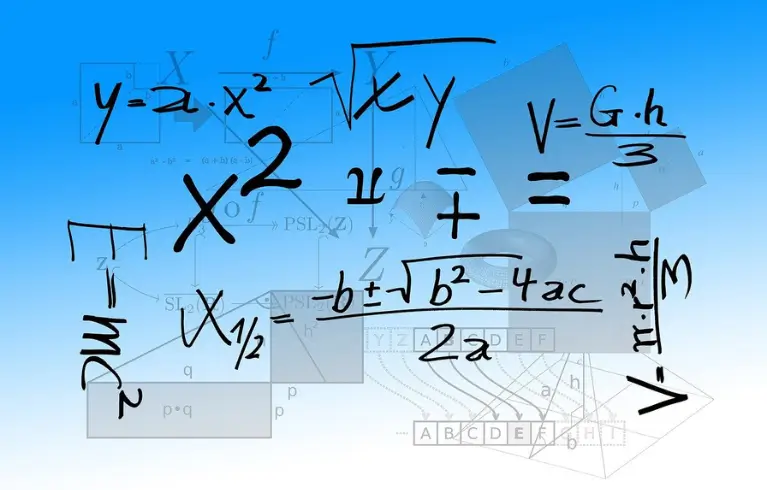The laws of exponents play a fundamental role in mathematics, serving as a powerful tool to simplify complex calculations and express large numbers or variables in a concise manner. Whether you’re a student struggling to grasp the concept or an enthusiast looking to deepen your understanding, this blog post aims to provide a comprehensive guide to the basics of exponents. By the end of this article, you’ll have a solid foundation to tackle more advanced exponent concepts with confidence.
What are Exponents?
Exponents, also known as powers, are fundamental mathematical concepts with significant importance. They play a crucial role in various mathematical operations and are denoted by a superscript number. Let’s delve into the key aspects of exponents:
Definition: Exponents represent the number of times a base number is multiplied by itself. For instance, in the expression $2^3$, $2$ is the base, and $3$ is the exponent. This means we multiply $2$ by itself three times: $2 \times 2 \times 2$.
Significance in Mathematics: Exponents simplify complex calculations, especially when dealing with repetitive multiplications. They are the basis for expressing powers and understanding growth and decay in various scientific and real-world contexts.
Relationship with Repeated Multiplication: Exponents are a concise way to express repeated multiplication. Instead of writing out the multiplication several times, we use exponents for clarity and brevity.
Base and Exponent Notation: The base is the number being raised to a power, and the exponent indicates how many times it is multiplied by itself. The notation $a^n$ represents “$a$” raised to the power of “$n$.”
In summary, exponents provide a shorthand notation for repeated multiplication and are essential in mathematics for various calculations and expressions
Laws of Exponents
Understanding the laws of exponents is crucial for simplifying expressions and solving equations. Let’s explore these laws in detail:
Multiplication and Division Laws: When multiplying numbers with the same base and different exponents, you can add the exponents. For example, $a^m \times a^n = a^{m+n}$. For division, subtract the exponents: $\frac{a^m}{ a^n }= a^{m-n}$.
Example: $\frac{2^7}{2^4}=2^{7-4}=2^3=8$.
Power of Zero: Any nonzero number raised to the power of zero is equal to $1$: $a^0 = 1$. This fundamental rule is essential in many mathematical calculations.
Raising a Power to a Power: When raising a power to another power, multiply the exponents: $(a^m)^n = a^{m\times n}$. This law helps simplify complex expressions involving multiple exponents.
Example: $(2^5)^3=2^{5\times 3}=2^{15}$.
Negative Exponents:
Negative exponents may seem counterintuitive at first, but they have important applications:
Demystifying Negative Exponents: Negative exponents indicate reciprocals. For example, $a^{-n}$ is equivalent to $\frac{1}{a^n}$. They are used to express numbers as fractions or decimals.
Converting Negative Exponents: To convert a negative exponent to a positive exponent, move the base to the denominator or vice versa. For instance, $a^{-n} = \frac{1}{a^n}$.
Practical Applications: Negative exponents are encountered in scientific notation, expressing small quantities, and solving problems involving decay and diminishing values.
Fractional Exponents:
Fractional exponents bridge the gap between powers and roots:
Introduction to Fractional Exponents: Fractional exponents are used to express roots. For instance, $a^{\frac{1}{n}}$ represents the nth root of “$a$.”
Conversion to Radical Notation: Fractional exponents can be written in radical notation. $a^{\frac{1}{n}}$ is equivalent to the nth root of “$a$.”
Rational Exponents: Rational exponents are of forms, like $a^{\frac{m}{n}},$ where “$m$” and “$n$” are integers. They have unique properties that blend the rules of exponents and roots.
Scientific Notation
Scientific notation uses exponents to represent large or small numbers more efficiently:
Scientific Notation: Scientific notation expresses numbers as a product of a decimal fraction and a power of $10$, such as $3.0 x 10^5$ for $300,000$.
Converting Numbers: Scientific notation simplifies calculations involving very large or very small numbers and is commonly used in science and engineering.
Advantages: Scientific notation is valuable for representing significant figures, making calculations more manageable, and expressing precision in measurements.
Exponents in Algebra
Exponents are widely used in algebraic expressions and equations:
Algebraic Applications: Exponents are essential in simplifying polynomial expressions, such as factoring and expanding binomials.
Simplification: Exponents help reduce complex expressions and are crucial for solving equations and inequalities.
Step-by-Step Examples: I’ll provide detailed examples to illustrate the application of exponents in algebraic problems, helping students grasp these concepts effectively.
Incorporating these concepts into your articles will provide young university and engineering students with a comprehensive understanding of exponents and their diverse applications in mathematics and science.
Conclusion:
Laws of exponents are a fundamental concept in mathematics that can unlock a world of possibilities for simplifying calculations and expressing numbers concisely. By mastering the basics of exponents, you’ll gain a solid foundation to tackle more complex exponent concepts and apply them in various mathematical and scientific fields. So, embrace the power of exponents and embark on a journey to enhance your mathematical prowess!
Exponential Equations
Exponential Equations introduce an exciting twist to the world of exponents. These equations involve variables raised to the power of another variable or constant. Here is an example:
Find $y$ such that $2^{2y + 1} = 16$. To find the solution, we observe that $16=2^4$. This gives us $2^{2y + 1} = 2^4$. Equate the exponents: $2y + 1 = 4$. Solve for $y$: $y = \frac{3}{2}$.
Solving exponential equations involves various strategies, such as applying logarithms or manipulating exponents to simplify the equation.
Logarithmic Functions:
These are like the opposites of exponents. They help us solve tricky problems involving exponents. In fact, logarithmic functions are powerful tools that can help us untangle complex problems involving exponents. They’re like the reverse operation of exponentiation, and they’re used to find the unknown exponent or variable in exponential equations. Here is an example to illustrate how logarithmic functions work: F
Solve for $t$: $e^{(0.2t)} = 4$. Solution: Take the natural logarithm $\ln$ of both sides: $\ln(e^{(0.2t)}) = \ln(4)$. Applying the logarithmic property, $(0.2)t \times \ln(e) = \ln(4)$, which simplifies to $(0.2)t = \ln(4)$. Solve for $t$: $t = \ln(4) / 0.2$.
